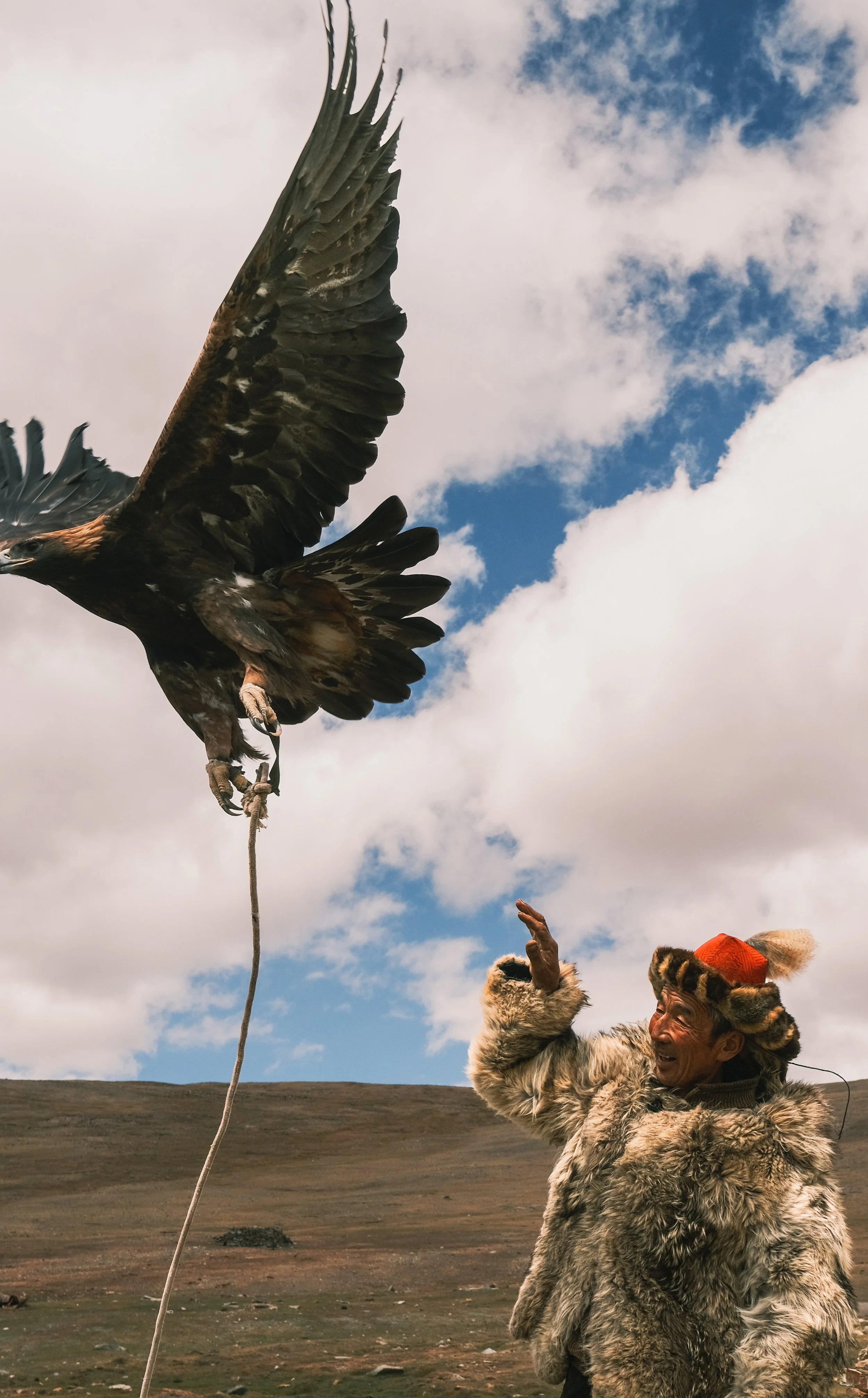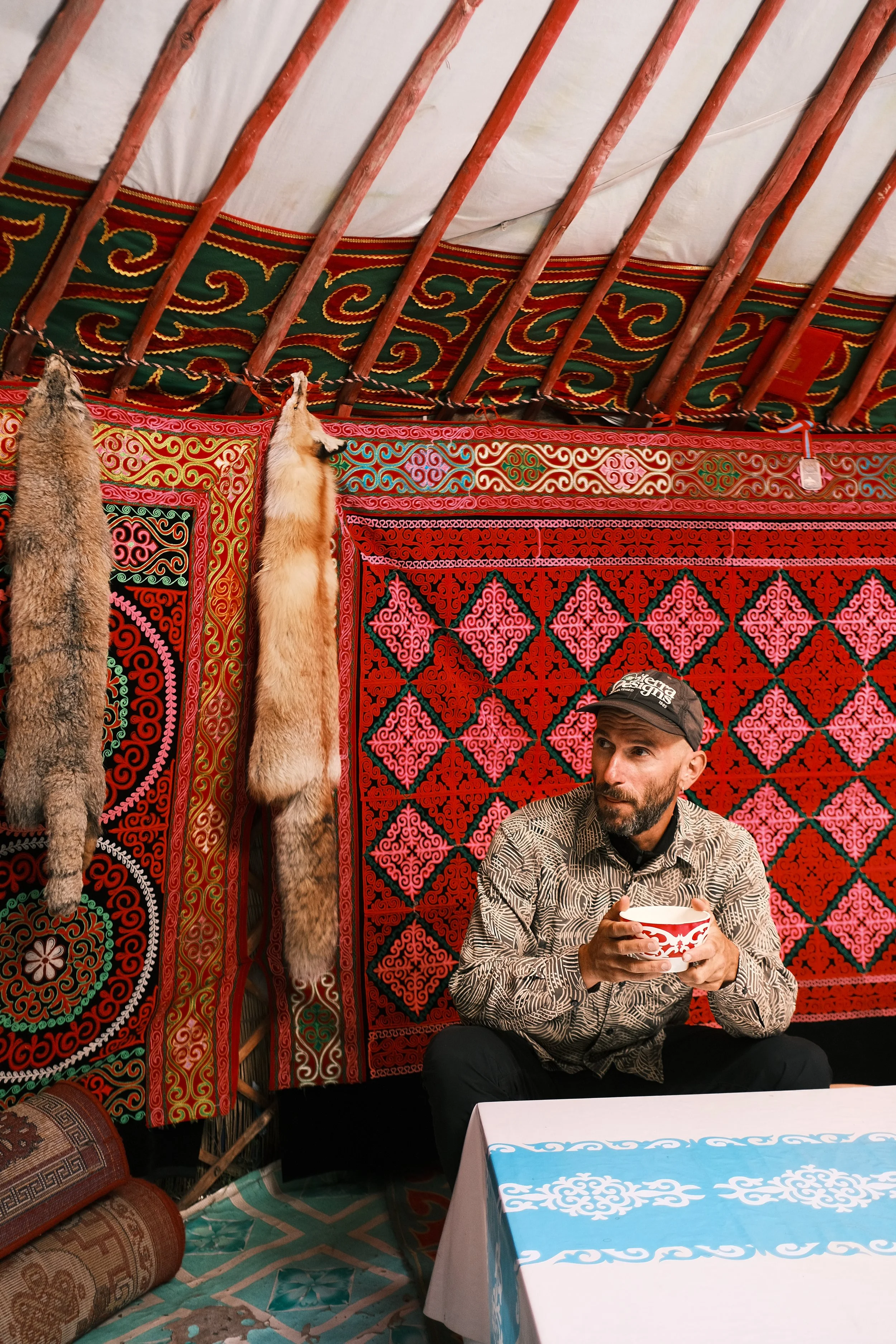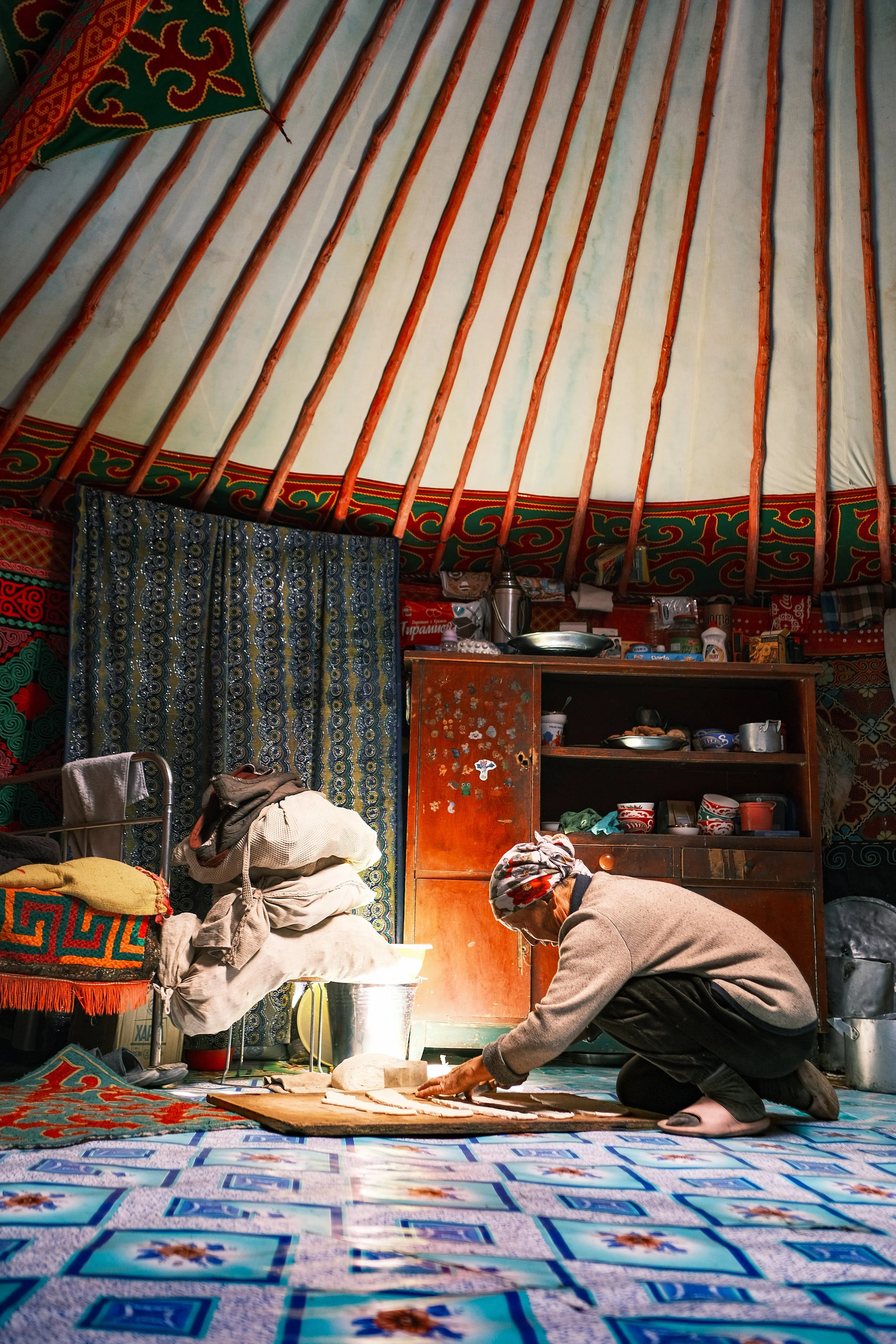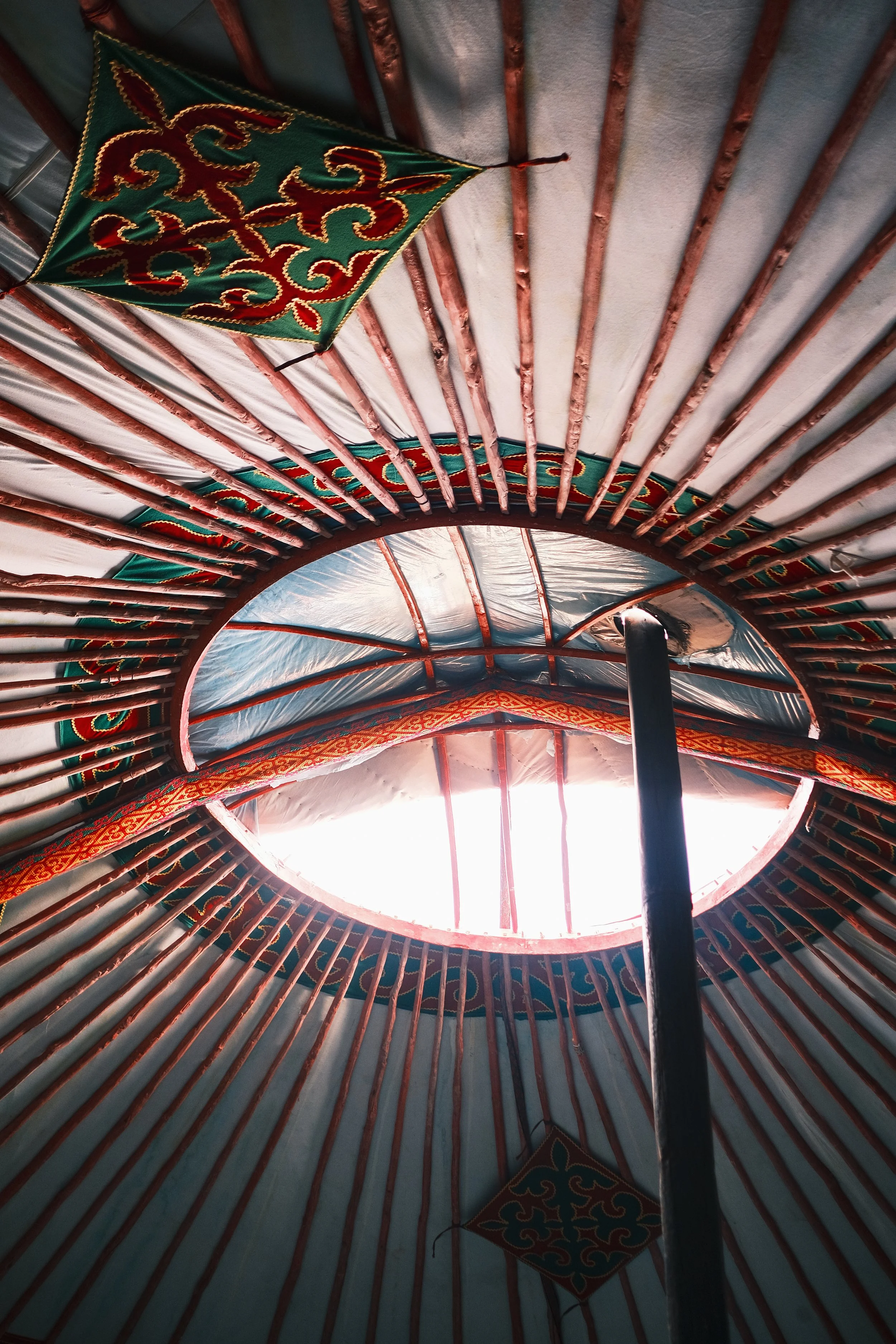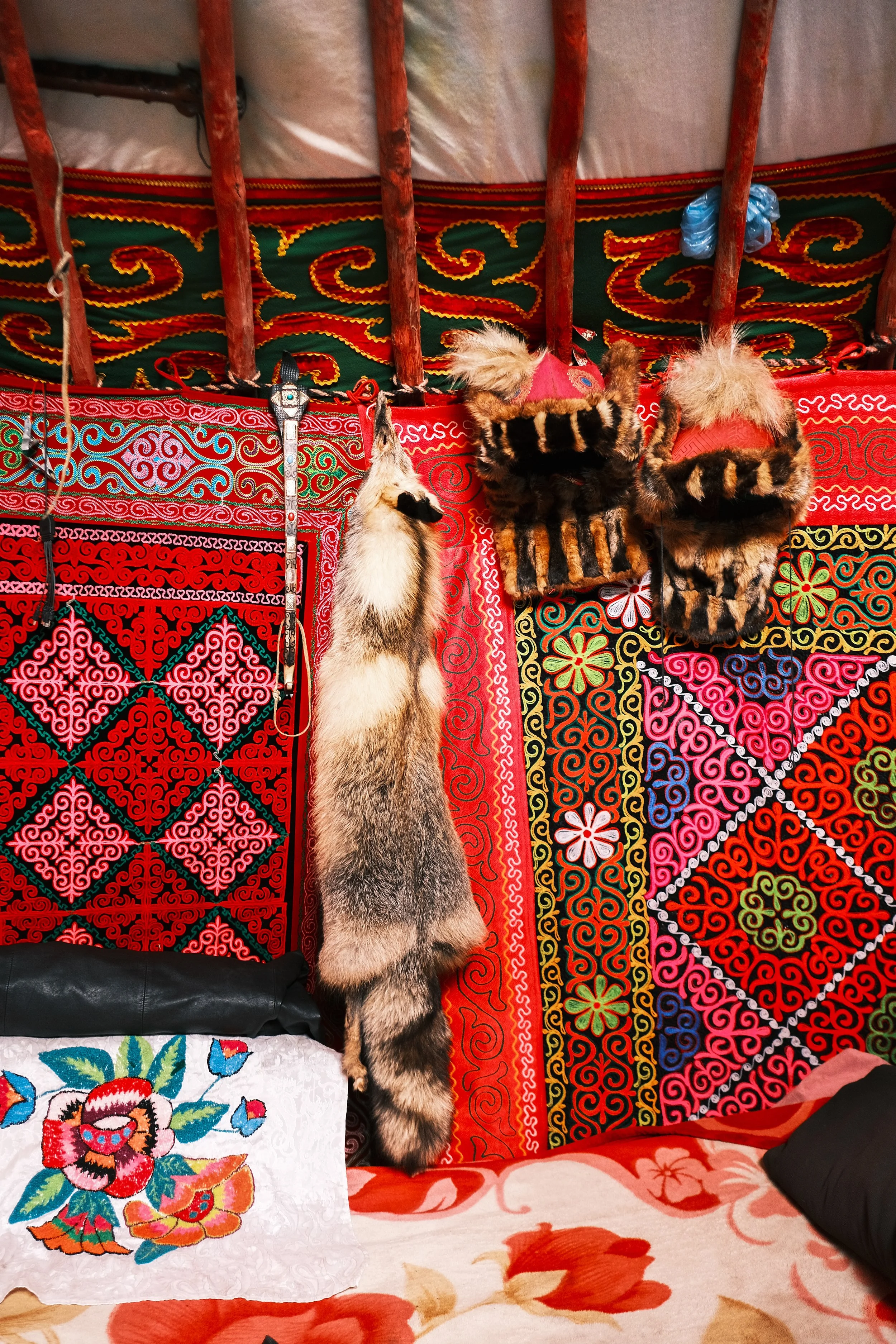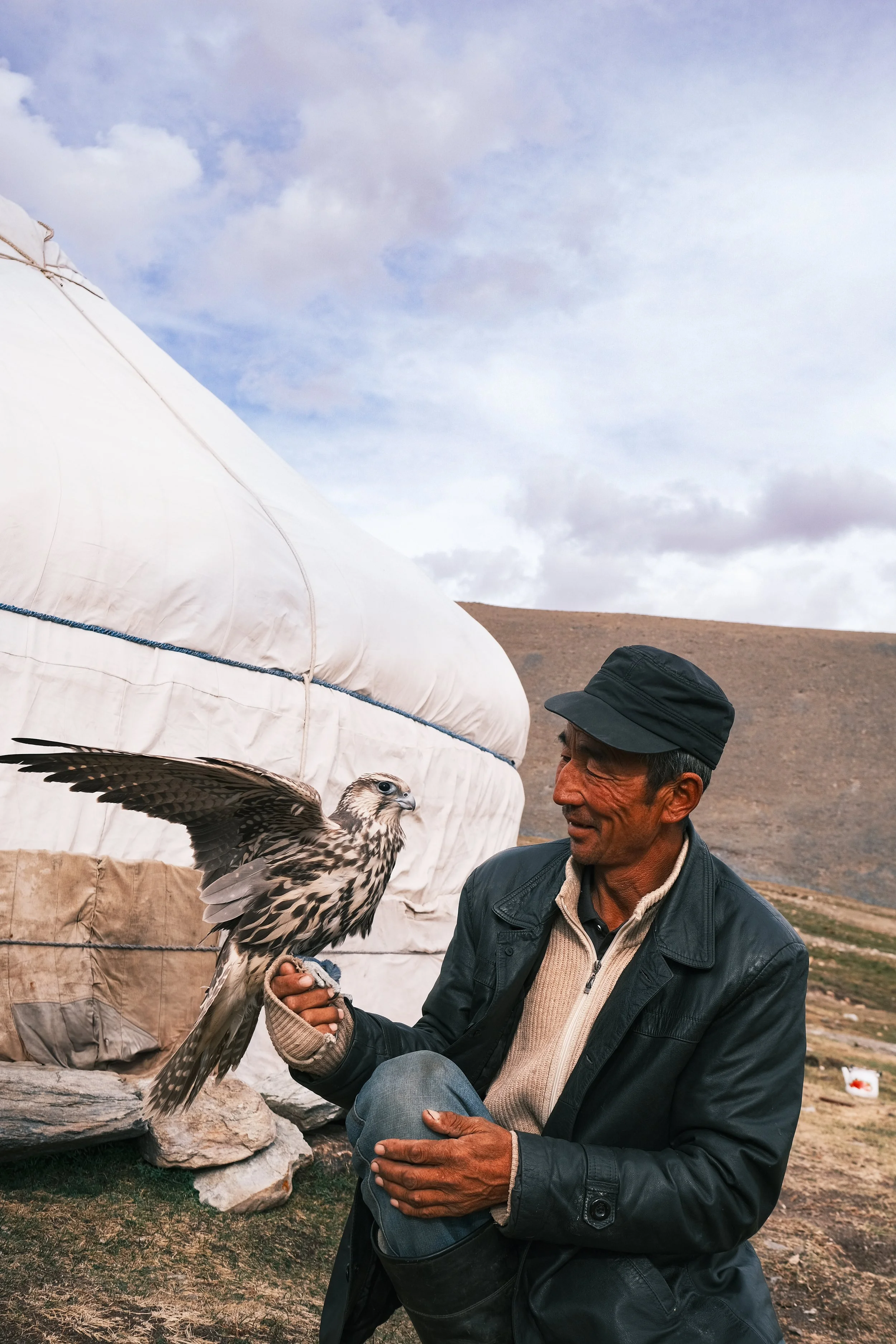The Last of Their Kind
We spent two days living in a traditional ger in the mountains with one of the last few Mongolian-Kazakh eagle hunters of western Mongolia 🏔️🦅 — a raw, authentic experience that left us with unforgettable memories and a few open questions. Rakhimbek has been hunting with golden eagles for 35 years, and now he’s passing the tradition on to his twelve-year-old daughter, Aigolek, one of only a dozen girls learning this ancient skill. She immediately struck us as a remarkable young person. Watching them in their traditional clothing, alongside their eagles and falcons, was both powerful and moving.
In 2010, UNESCO inscribed traditional falconry, including the golden eagle hunting of Mongolia’s Kazakh community, on its list of Intangible Cultural Heritage of Humanity. This recognition celebrates the deep knowledge, skill, and cultural identity passed down through generations. Yet it was impossible to ignore that these majestic birds are taken from the wild. Even though they’re released after about ten years, the experience highlighted the tension between honoring cultural heritage and questioning what freedom truly means for these animals. Whatever the perspective, one thing was clear: the bond between human and eagle is profound, and their way of life is truly extraordinary.
We slept on carpets inside the family’s ger — six of us huddled together in the cold night air. Life here follows a simple, steady rhythm: the day begins with milking goats and yaks; the fire is fed with dried dung; tea is brewed again and again; dough is kneaded for boortsog (fried bread); and meat is chopped for soup. The woman’s hands tell stories — rough, calloused, marked by years of labor. Every movement has purpose; nothing is wasted.
Aigolek caught our attention immediately. She moves like someone twice her age — focused, silent, and sure of what to do. She helps her mother without a word, every gesture practiced, only softening in rare moments of play with neighboring children. Yet her path is already unusual: she is learning to hunt with eagles, following in her father’s footsteps. Among roughly 300 active eagle hunters, only about a dozen are women, making her journey quietly revolutionary in a world where survival leaves little room for choice.
Evenings in the ger felt like a ceremony of warmth and togetherness. When the mountain of meat and bones was placed before us, we carefully picked the leanest pieces while the father insisted we try the fat — “the best part,” he said with pride. When we admitted that we usually cook pasta every night, he laughed and said:
“Without meat and fat, we would freeze to death.”
Life in the mountains follows its own clear rules. Gender roles are deeply rooted: men hunt marmots for the eagle, leaving with guns and motorcycles; women milk, cook, and tend the fire. Only Aigolek’s path breaks this pattern, and perhaps that’s why it stands out so strongly. In Mongolian tradition, the youngest child is responsible for caring for the parents for life — living together, sharing the same ger and the same air. From a Western perspective, this feels hard to grasp, but for them, it is the natural rhythm of family and time.
